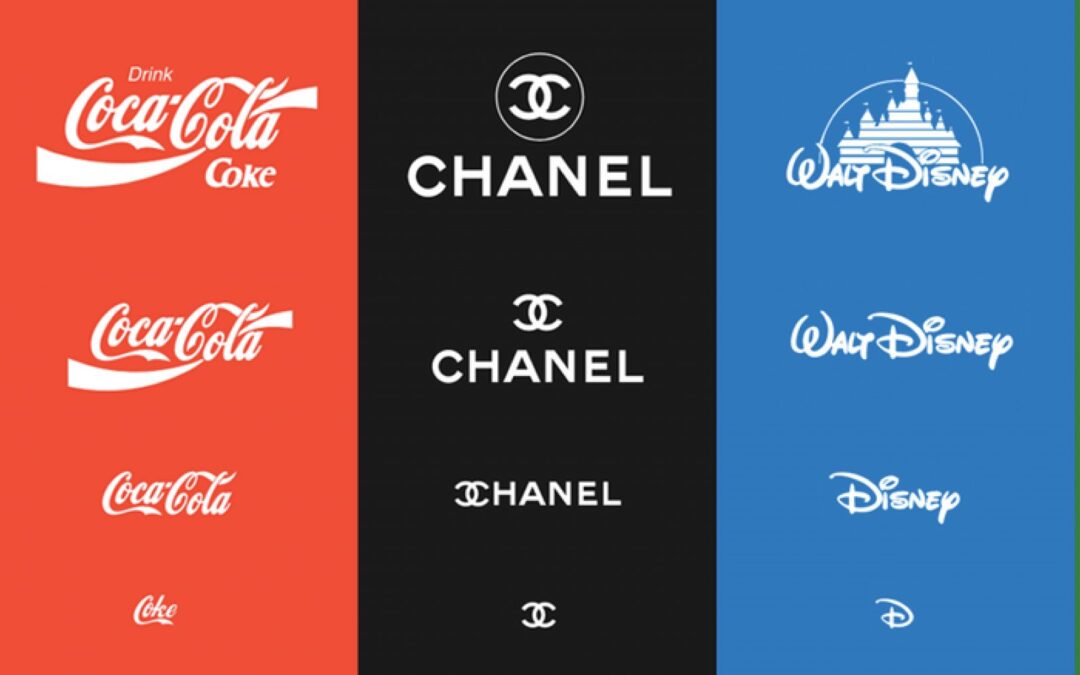
by threshold | Nov 10, 2023 | Digital Marketing, Financial Marketing, General, Marketing, Thought Leadership
 Jenny Paul
Jenny Paul
The landscape of the banking industry is in a constant state of evolution, especially in the digital sphere. As we delve into 2024, the key to staying ahead lies in understanding
emerging trends and harnessing the expertise of advertisers to effectively market banking products.
Let’s explore some pivotal trends shaping the banking sector and how advertisers can play a key role in communicating these financial offerings.
2024 banking trends: a snapshot.
data-centric strategies.
The effective utilization of data remains paramount for banks and credit unions. Targeted marketing based on customer insights and behaviors is key to driving
engagement and conversions. Advertisers equipped with analytical tools can assist in crafting data-driven campaigns that resonate with specific customer segments.
personalized customer experiences.
Customers expect tailored experiences. Banks are increasingly focusing on personalization to deliver relevant services and offerings. Advertisers can aid in creating
personalized content across various channels, optimizing customer journeys, and enhancing user experiences on digital platforms.
emphasis on digital channels.
The digital shift in banking continues to accelerate. Online banking, mobile apps, and digital payment solutions are becoming the norm. Advertisers well-versed
in digital marketing strategies can help banks capitalize on these platforms, ensuring visibility and engagement through targeted digital campaigns.
rise of fintech collaboration.
Collaboration between traditional financial institutions and FinTech firms is on the rise. Advertisers can assist in showcasing these partnerships, highlighting
innovative solutions and services that emerge from such collaborations, fostering trust and credibility among customers.
the role of advertisers in banking product
promotion.
strategic campaign development.
Advertisers bring expertise in developing strategic marketing campaigns tailored to the banking sector. They can identify the unique selling propositions of
financial products and craft compelling narratives that resonate with the target audience.
utilizing multi-channel marketing.
Effective advertisers understand the importance of a multi-channel approach. They can leverage various platforms – social media, email marketing, search engine
advertising, etc. – to ensure comprehensive coverage and engagement across diverse customer segments.
optimizing user experience.
Advertisers play a crucial role in optimizing the user experience. They can collaborate with banks to design intuitive interfaces, mobile apps, and websites that simplify
banking processes, creating seamless and user-friendly experiences.
adapting to changing trends.
Advertisers constantly monitor industry trends and consumer behavior shifts. Their agility in adapting campaigns to align with evolving trends ensures that banking
products stay relevant and competitive in the market.
looking forward: the collaborative future.
The banking landscape in 2024 presents immense opportunities for growth and innovation. However, to navigate this complex terrain successfully, collaboration
between financial institutions and advertisers is indispensable. By leveraging the expertise of advertisers, banks can effectively communicate the value of their
products and services, driving customer engagement and loyalty.
to sum things up.
As we embrace the dynamic trends in banking, the role of advertisers becomes pivotal in shaping the success of banking product promotion. Their ability to strategize,
innovate, and adapt will be instrumental in propelling the banking industry forward in 2024 and beyond.
about the author.
Jenny is a senior CSM who handles all things financial marketing – literally. When it comes to financial institutions and their marketing campaigns, there isn’t a question she
can’t answer, or a problem she can’t fix. She keeps the ship floating, and makes it look effortless.
When she’s not acting as a guru for our CSM team, you can find her spending time with her kiddos, probably doing something adventurous and amazing.

by threshold | Oct 13, 2023 | Digital Marketing, General, Marketing, Tech/Web, Thought Leadership
 Alfred Perez – digital marketing manager.
Alfred Perez – digital marketing manager.
press start.
Ever thought of pairing your marketing efforts with video games? You just might after reading this.
Video games have seen a significant upward trajectory for the past few years. Much of the growth was due to the increase in player base, the mobile gaming boom, e-sports, and streaming platforms like Twitch. The number of eyes going towards video games has continued to capture the attention of brands trying to effectively get in front of their audience. Video games have slowly, but surely found ways to promote ads through their medium.
Here are a few examples of how to advertise in video games:
in-game billboards and posters.
Modern video games include billboards, posters, and signs in virtual worlds. Brands can pay for ad space on these in-game assets. These advertisements can be static images or even videos, making them highly visible to players. Planning truly needs to be at the forefront of this marketing strategy because video games are a worldwide medium so the brand should be worldwide as well for this to really be effective.
product placement.
Brands can negotiate product placement deals with game developers to have their products or logos featured within the game’s environment. This can include items, vehicles, or clothing that prominently display the brand. Pretty cool, right?
sponsored game content.
Brands can sponsor specific in-game content, such as events, challenges, or game modes. Time to pick your favorite level!
sponsored streams.
Brands can negotiate terms with popular streamers about promoting their product or service through the streamer’s channel to reach their specific audience. This can include logos throughout the stream, in-channel ad breaks or an ad read from the streamer like a podcaster would.
branded virtual items.
In some games, players can purchase or earn virtual items like clothing, accessories, or skins for characters or objects. Brands can create branded virtual items for players to use in the game, increasing brand visibility. It’s swag time.
playable ads.
Some mobile games offer playable ads where players can engage with a mini-version of the advertised game within the ad itself. If players enjoy the mini-game, they may be more likely to download and play the full game.
interactive advertisements.
Interactive ads can appear on loading screens, pause menus, or as part of the game’s storyline. These ads may require players to engage with them in some way, such as clicking, swiping, or solving puzzles.
video ads.
Short video advertisements can be shown to players as they progress through a game or during natural breaks in gameplay. These ads can be skippable or non-skippable, and they often reward players with in-game currency or other benefits for watching. An example of this would be Amazon’s video game streaming service Twitch which is comparable to how Google’s YouTube video ads work.
native advertising.
Some games incorporate advertising seamlessly into the game’s narrative or environment, making it feel like a natural part of the gameplay. This can include characters using real-world products or references to real-world events. Ready to explore your game-writing abilities?
advergames.
Advergames are video games created specifically for marketing purposes. These games often feature branded characters, themes, or products and can be used to engage and entertain potential customers.
live events and tournaments.
Brands can sponsor or host live in-game events or tournaments, where players compete for prizes or recognition. These events can be streamed on platforms like Twitch, expanding the reach of the brand.
the end game.
It’s essential for brands to choose the right games, streamers and/or advertising methods that align with their target audience and marketing objectives. You don’t want your marketing to feel forced or out of place. Additionally, respecting the gaming experience and ensuring that ads enhance rather than disrupt gameplay is crucial for the success of in-game advertising.
Now plug in that X-box and get going!
before you go.
For more tips and information about marketing your everything, take a look at the rest of our blogs, right here on our website!
You can also subscribe to our email newsletter (it’s got some great stuff), and follow us on Instagram, Facebook, or LinkedIn!
about the author.
Alfred is the Digital Marketing Manager at Threshold, which means he’s basically a wizard when it comes to all things digital. When Alfred’s not monitoring and activating digital services for our clients to deliver the best possible results, you can probably find him playing video games, visiting local Austin breweries, and playing rec sports with his friends.
He also loves to cook, but isn’t a fan of doing the dishes that accompany cooking a meal – but really, who can blame him?

by threshold | Jul 10, 2023 | Digital Marketing, Marketing, Tech/Web, Thought Leadership
 Abby Barnes
Abby Barnes
AI: ever heard of it?
As the digital marketing landscape continues to rapidly evolve, artificial intelligence (AI) is emerging as a critical tool for marketers. At Threshold, we’ve witnessed how AI is reshaping customer interactions and enabling marketers to make more informed marketing decisions.
To fully unlock the potential of AI and create personalized customer experiences, it’s crucial to understand its fundamentals, select the right AI technologies, and measure its impact. We’ve created a guide to equip you with the knowledge you need to really harness AI’s capabilities, enhance your marketing campaigns, and drive your team toward success.
Let’s get started, shall we?
what is AI?
AI simply refers to the ability of machines to perform tasks that traditionally require a human. In digital marketing, AI plays a critical role in helping businesses automate and optimize their marketing efforts to create more personalized experiences for their customers. Cool, right?
One use of AI in digital marketing is through the use of machine learning algorithms. These algorithms can process and analyze large datasets, including customer behavior and preferences. AI can help identify patterns and predict future behavior, allowing marketers to develop more strategic and personalized marketing campaigns.
But it doesn’t stop there. Another application of AI is through the use of chatbots on your websites. Many property management companies have already started adopting these bots as they can serve as valuable virtual assistants, capable of delivering instant support.
what are the benefits of AI in Digital Marketing?
We’re so glad you asked.
enhanced efficiency
AI helps with automating tedious tasks like data collection, analysis, and segmentation, freeing up valuable time for marketers to focus on strategic initiatives.
personalized experiences
Leveraging AI tools allow marketers to gain insights into customer needs and preferences, providing tailored campaigns that resonate with your target audience.
real-time optimization
AI-powered analytics provide real-time insights into customer behavior, enabling marketers to optimize campaigns quickly. By leveraging AI’s ability to analyze vast datasets, businesses can make data-driven decisions that enhance marketing strategies and deliver better results.
automation and scalability
AI automates various marketing tasks, including customer service, data analysis, and social media and email scheduling. This automation allows businesses to scale their marketing efforts efficiently as their customer base expands.
identifying the right AI technologies
Choosing the right AI technologies that align with your specific needs is crucial for successful implementation in marketing. A wide range of AI-driven tools, from customer service bots to data analysis platforms, are available. Like any technology, AI in marketing carries inherent risks that should be addressed. Privacy concerns may arise when collecting and analyzing customer data using AI-driven tools.
That’s some serious business.
It is crucial to ensure that data is collected and used securely and in compliance with regulations. Additionally, being aware of the potential for bias in AI algorithms and taking steps to ensure accuracy and fairness are paramount.
integrating AI into your marketing strategy
Once the appropriate AI technologies have been identified, integrating them into your marketing strategy is key. As digital marketers, we’re already using AI-driven initiatives in Google Ads campaigns. Responsive Search and Display Ads are the perfect example!
By providing multiple headlines, descriptions, and creative assets, Google’s AI will generate ad combinations and learn over time which combinations drive better results.
AI-driven tools enhance efficiency and campaign effectiveness, but it is crucial to track and evaluate results. By measuring campaign performance, you can identify areas where AI has the most significant impact and make informed adjustments. Plus, (last point, promise), considering factors such as cost and return on investment helps ensure you make informed decisions about implementing AI technologies.
to sum it up
The potential of AI in marketing is vast, and understanding how to harness its power is vital for marketers. This comprehensive guide gives you a quick overview of the fundamentals of AI in marketing, along with how you can see success in implementation.
By embracing the benefits and mitigating the risks associated with AI, you can unlock your marketing team’s potential and drive better results.
Tired of spending precious hours trying to decipher AI, ad trends, and where to put your spending? We don’t blame you. Luckily, we have a solve. At Threshold, we are well-versed in AI technology and can guide you through this transformative journey.
Contact us today to explore the revolutionary possibilities AI offers for your marketing initiatives.
before you go
For more tips and information about marketing, take a look at the rest of our blogs, right here on our website! You can also subscribe to our email newsletter, or follow us on Instagram and Facebook!

by threshold | Jun 15, 2023 | Creative, Digital Marketing, Marketing, Thought Leadership
 Laura Robbins
Laura Robbins
Your brand story is the soul of everything you do. In a world of ever-increasing competition and constant bombardment of advertisements, your “why” as a company, brand, and business is just as important as the services you offer, the apartments you lease, and the products you sell. Connecting with your audience on a deeper level has become the key to successful marketing.
Your brand’s story holds the power to captivate, inspire, and foster a genuine connection with your target audience. Let’s explore several powerful ways to share your brand’s story and make an indelible impact on your customers, shall we?
craft a compelling brand narrative.
What’s your humble beginning? What are the core values, mission, and vision that drive your business? Crafting a story that highlights your brand’s journey, challenges overcome, and triumphs achieved will tap into the emotional response of your target audience. It conveys authenticity and can transform your brand from being a mere product or service provider to a source of inspiration and trust.
Stuck? Go back to the basics with a simple principle: why it all began.
showcase your people.
Humans are visual creatures. It’s human nature to feel more connected to a brand with a face. Leverage behind-the-scenes footage that resonates with your audience. Engaging visuals not only grab attention but also make your brand story more memorable and shareable.
leverage customer success stories.
Your customers are an invaluable asset when it comes to sharing your brand’s story. Encourage them to share their experiences, testimonials, and success stories. User-generated content adds an authentic touch to your marketing efforts, demonstrating real-world examples of how your brand has positively impacted people’s lives. Think about it, who wouldn’t be drawn to live in an apartment community that has so many real happy endings?
don’t forget: share your storytelling across all channels.
Your brand’s story should permeate all your marketing channels consistently. From your website and social media platforms to email campaigns and advertising, ensure that your narrative is integrated seamlessly. Develop a cohesive brand voice and tone that reflects your story, creating a unified experience for your audience across various touchpoints.
Why? Consistency helps reinforce your brand’s message and fosters brand recognition, making it easier for customers to connect with your story.
to sum it up.
Sharing your brand’s story is an integral part of effective marketing, allowing you to forge meaningful connections with your audience. Remember, your brand’s story is unique and deserves to be shared. At Threshold, we believe in storytelling’s power and are committed to helping businesses unlock their brand’s potential through compelling narratives. Watch as your marketing efforts become more impactful and resonate with your audience on a deeper level.
For more tips and information about marketing, take a look at the rest of our blogs, right here on our website! You can also subscribe to our email newsletter, or follow us on Instagram, Facebook, and Twitter!

by threshold | May 15, 2023 | Design, Digital Marketing, Thought Leadership
 Mai Mongelous
Mai Mongelous
Why you should be focusing on Gen Z
As the largest generation in the United States, Gen Z comprises individuals born between 1997 and 2012.
This generation has grown up with technology and the internet always readily available, making them highly tech-savvy and deeply connected to social media. With an estimated purchasing power of over $143 billion in the US alone, Gen Z is a highly influential market segment that cannot be ignored by real estate businesses.
As such, it’s crucial for real estate businesses targeting Gen Z to consider the importance of an adaptable logo that resonates with this audience.
What is an adaptable logo?
An adaptable logo is a visual representation of a brand that can be easily adjusted to work across different mediums, formats, and applications without losing its core identity or essence. It is designed to maintain a consistent look and feel across various marketing materials such as print, digital and social media. An adaptable logo can be resized, repositioned, or modified to suit different contexts, but it retains the same essential design elements that make it instantly recognizable as the brand’s logo. The goal of an adaptable logo is to ensure that the brand’s messaging is cohesive and memorable across all channels, while also allowing for flexibility and versatility in different marketing contexts.
Why you should be creating adaptable logos
Real estate businesses targeting Gen Z need to consider the importance of an adaptable logo for several reasons.
Easily sharable
An adaptable logo is shareable. In today’s digital age, social media platforms are a crucial part of any marketing strategy, and Gen Z is known for their love of sharing content. An adaptable logo that looks great on various platforms can help attract attention and increase shares, ultimately driving engagement and awareness.
Branding
Cohesive branding is key. Gen Z is highly skeptical of businesses that lack authenticity or appear to be inauthentic. An adaptable logo that maintains the same look and feel across all marketing materials can help establish a consistent and authentic brand image that resonates. Since this generation values authenticity and creativity, a logo that reflects those values will be more likely to capture their attention and earn their trust in the long run.
Integration
Seamless integration matters. As a tech-savvy generation, Gen Z expects businesses to have a strong online presence.
An adaptable logo that can be easily integrated into a website, a phone app, social media profiles, and other digital marketing channels ensures that the brand’s messaging is consistent across all channels, making it easier for them to recognize and engage with the brand.
Trust and awareness
A recognizable logo builds trust. For Gen Z, trust is a key factor in making purchase decisions. A recognizable logo that appears across different mediums and formats helps build brand awareness and establishes that trust, leading to increased customer loyalty and retention.
Forward-thinking
“Future-proofing” is essential. As a forward-thinking generation, Gen Z expects businesses to be proactive in adapting to new technologies and mediums.
An adaptable logo that can easily be updated to remain relevant in the ever-changing marketing landscape demonstrates a business’s commitment to innovation and staying ahead of the curve. Since they tend to stay on top of trends, Gen Z is quick to spot dated marketing and graphics.
To conclude
An adaptable logo is very crucial for real estate businesses targeting Gen Z. By having a logo that is versatile, consistent, recognizable, and “future-proof”, real estate businesses can attract and retain the loyalty of Gen Z customers in a highly competitive market.
As a result, they can establish a strong and authentic brand image that resonates with this influential audience, leading to increased brand awareness, engagement, and customer loyalty.
Before you go
Don’t forget, we’re experts when it comes to crafting marketing strategies that drive leasing results and building high-ranking SEO-friendly custom websites! Need help? Reach out to a CSM or any of our team members to get started on taking your marketing and SEO to the next level, see an increase in traffic, and watch the leads roll in.
For more tips and information about digital and real estate marketing, take a look at the rest of our blogs, right here on our website! You can also subscribe to our email newsletter, or follow us on Instagram, Facebook, or LinkedIn!
About the author
Mai is something of a superstar here at Threshold. Working exclusively as our Senior Designer, there is nothing she can’t create flawlessly for our clients, and our own TH brand. At the end of the day, our creative THeam would not be the same without her leading the way both in her ability to bring dreams to life, and her strategy behind it all.
When she’s not on the clock, Mai loves keeping her creative juices flowing by acting as a maker in her hobbies. From refinishing furniture to creating her own art, her mind is always fueling itself with brilliance and taste. She only wishes she had more time in her days to continue doing more of what she loves.

 Jenny Paul
Jenny Paul

 Alfred Perez – digital marketing manager.
Alfred Perez – digital marketing manager.
 Abby Barnes
Abby Barnes
 Laura Robbins
Laura Robbins
 Mai Mongelous
Mai Mongelous